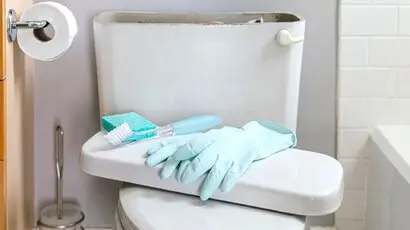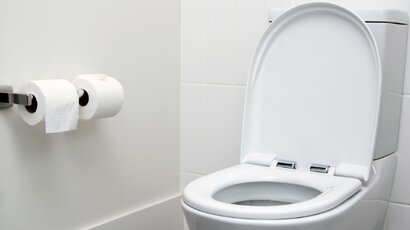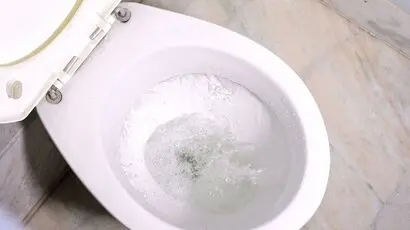How Your Toilet (Actually) Works
Ever wonder how your toilet actually works? This article dives into the basics of how toilets flush and what happens when you push that lever.
Have you ever wondered how your toilet works? It’s a lot more complex than you might think!
In this blog post, we’ll explore the various parts of a toilet and explain how they seamlessly work together to get the job done. So, stay tuned if you’ve ever been curious about what’s happening behind that closed door!
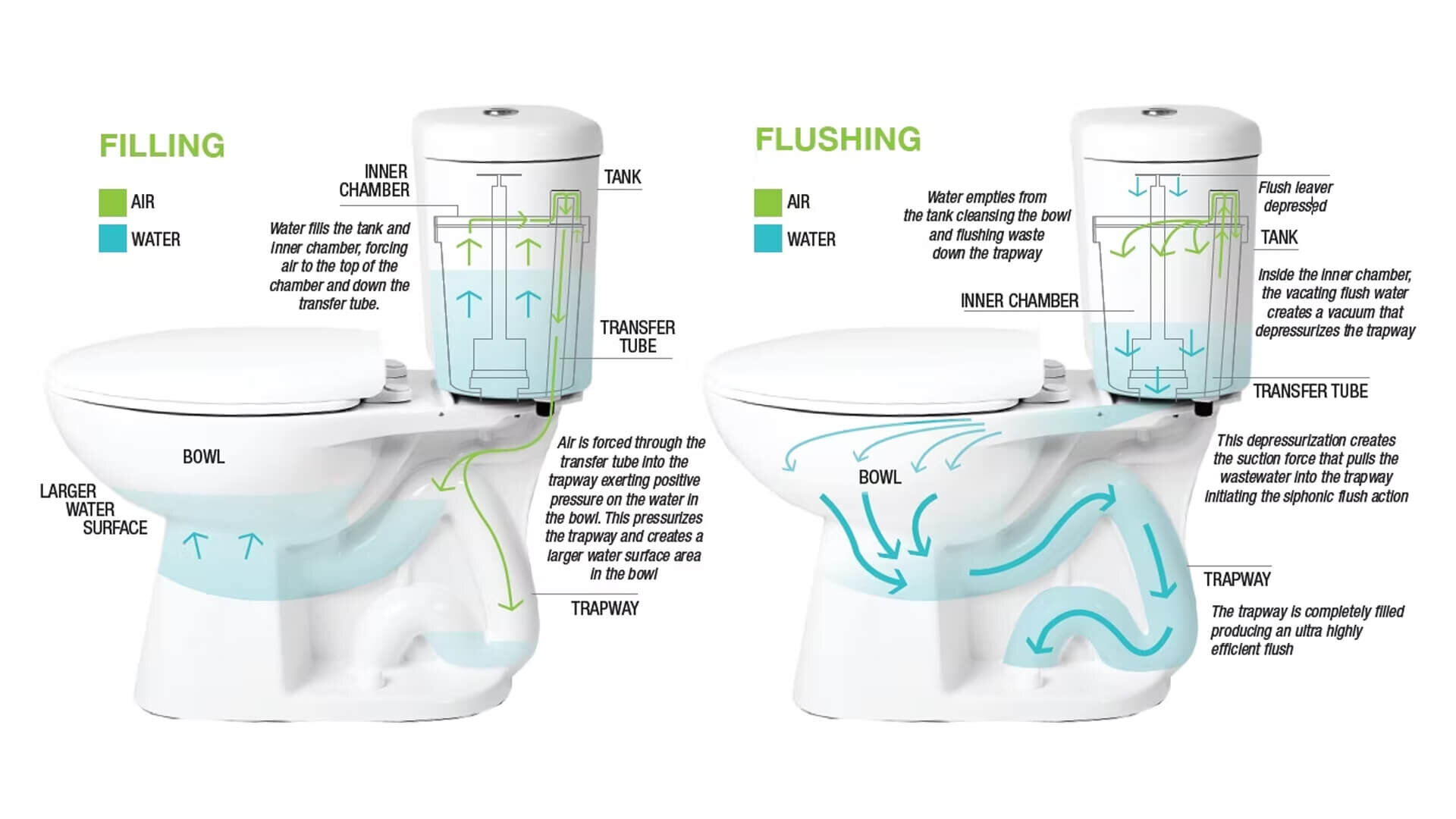
It all starts when you press the flush handle, which lifts the toilet flapper. This handle is linked to a chain, and pulling the handle tugs the chain, kicking off the flushing process. This is what helps remove the waste from the toilet bowl.
This pulling action in the flush of the toilet causes the flapper to rise to allow the water into the bowl.
When the toilet flapper lifts, water from the tank rushes into the bowl through the syphon and rim jets. As the tank empties, the float ball lowers, triggering the fill valve to open. Once the tank is completely empty, the rubber flapper returns to its original spot on the flush valve seat.
Flush toilets use a combination of suction and gravity, which causes water movement throughout the system. As the toilet bowl gets filled, water is forced into the trapway due to gravity, resulting in the overflowing of the trapway.
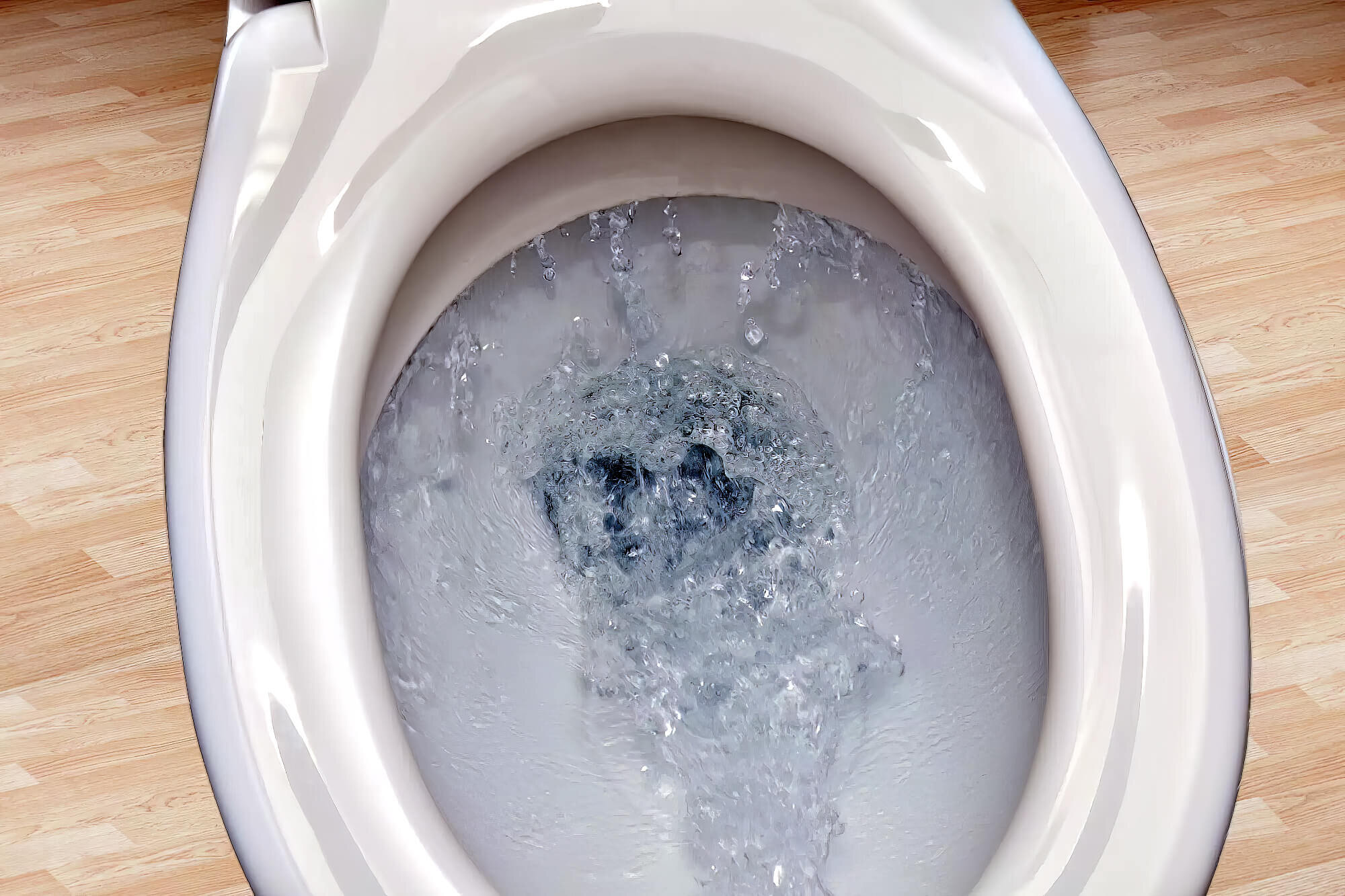
When water flows on top of the trapway, it leads to the development of a suction. When that happens, all the water and waste get removed from the toilet bowl. And as water leaves this bowl, it leaves space, filled by air that comes through the trapway. This ends the syphoning effect and also completes the flushing process.
The human waste goes from the toilet bowl to the S-trap and then to the septic tank through the waste pipe or to the sewer.
Once the flushing process is complete, fresh water enters the toilet tank again through the fill valve. The fill valve is connected to the water supply line, and a refill tube passes the water through the overflow tube to the toilet bowl.
The rising water level lifts the float, which causes the fill valve to turn off. The water in the toilet bowl and the trapway reach the same level, just below the trapway.
Conventional flush toilets can function without a toilet tank, mainly due to the syphoning mechanism. Thanks to its curve, the toilet bowl can remove waste and is independent of the tank or the flush.
The syphon ensures a certain amount of water in the bowl and does not allow any more water. If the amount of water exceeds that set by the syphon, it will be sucked down into the sewer. This happens when the syphon tube gets filled with water, causing the syphon to suck the water from the toilet bowl.
Most flush toilets can operate without a tank thanks to the syphoning effect. However, having a tank makes things easier since you don’t have to pour water in manually each time. But why are toilet tanks so large?
The reason is that the water must have enough pressure or speed for the syphoning mechanism to activate. Water from smaller tanks or other sources like faucets may not be enough. That is why larger tanks are required to hold more water and let it out at high pressure when needed.
When the flush handle is pressed, the flush valve opens a hole with a diameter of two to three inches. Water flows from this hole into the bowl from the inner rim, most of which passes out from the syphon jet.
As explained above, the tank’s main function is to send about two gallons of water to the toilet bowl within 30 seconds when the toilet is flushed. The refill mechanism gets activated when the tank empties the tank’s water after the flushing.
Also, when the tank empties, the float ball is lowered and again rises when the tank is refilled. At the same time, water goes down the overflow tube to refill the bowl. The purpose of the float or tank ball is to let the toilet fill valve know when it is time to fill and empty the water. On the other hand, the overflow tube makes sure that the water reaches the required areas.
The tank may start filling with water without stopping if the float ball becomes detached in modern toilets. When that happens, the overflow tube will ensure excess water goes into the bowl, preventing the tank from overflowing. This is also why flushes take a long time to complete.
Many people are moving to modern toilets, like composting and vacuum types, yet most homes still rely on traditional ones. Fixing issues with flush toilets is usually straightforward and often doesn’t require special skills or tools.
With this guide, we’ve aimed to tackle the common question, “How does a toilet work?” Hopefully, it’s now easier to spot any problems if your toilet acts up. Diagnosing issues is the first step in solving them. But if you’re uncertain about repairs, it’s best to call a plumber with the right skills and tools for the job.
On that note, it is time to wrap up. Until next time.
Have you realised it takes a while for you toilet tank to fill up with water? Find out why in our guide to the three most common reasons why!
Installing a toilet doesn’t have to be a daunting task. This guide covers all the necessary tools and techniques you’ll need for a successful DIY toilet installation. From preparation to final steps, we’ve got you covered with expert advice and detailed instructions.
Unsure how to adjust the water level in your new toilet? Our easy-to-follow guide will help you achieve a perfect flush, ensuring optimal performance from your new commode.
